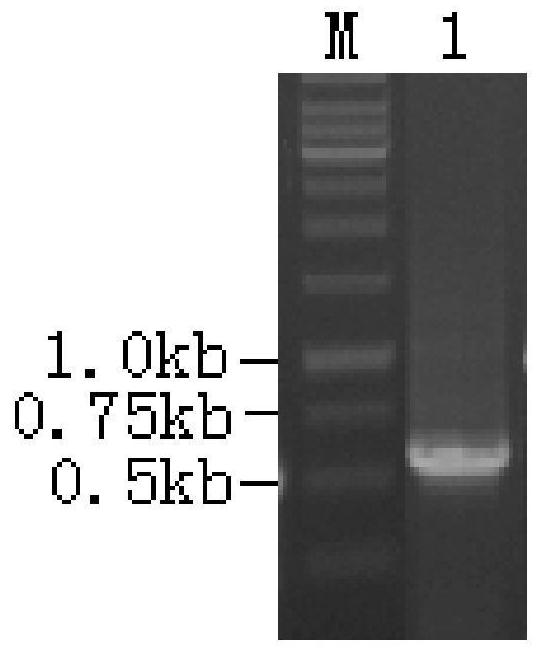A strain of Bacillus amyloliquefaciens producing pullulanase and its application
A technology of amyloliquefaciens and pullulanase, applied in the biological field, can solve the problems of low conversion rate of Bacillus amyloliquefaciens, and achieve the effects of promoting high-quality development, broadening application fields, and accelerating conversion
- Summary
- Abstract
- Description
- Claims
- Application Information
AI Technical Summary
Problems solved by technology
Method used
Image
Examples
Embodiment 1
[0035] Example 1 Screening and Identification of Neutral Protease High Yield Strain
[0036] 1. Primary screening of strains
[0037] Collect soil samples from Yishui County Food Industry Park, and grind the collected soil samples with a mortar; take 5g of ground samples and put them into a large triangular bottle filled with 95ml of sterile water to fully shake to obtain a soil suspension ; The soil suspension is gradiently diluted to obtain soil suspensions of different concentrations; the selected concentration is 10 -6 、10 -7 and 10 -8 Take 100 μl of the soil suspension and add it to the SX medium plate, spread it evenly, and culture it in a 37°C incubator for 1-3 days; select a large single colony with a transparent circle and streak it on the SX medium plate again, Carry out secondary confirmation and isolation and purification, culture at 37°C for 1-3 days, obtain a single colony after isolation and purification, take a single colony and inoculate it in a test tube c...
Embodiment 2
[0051] The mutagenesis of embodiment 2 bacterial strains and the screening of non-spore-producing and enzyme-activity-level-improved bacterial strains
[0052] 1. Preparation of Bacterial Suspension
[0053] Take the frozen strain LKT-10261, streak it on the solid plate of SX medium, culture at 37°C for 1-3 days, use an inoculation needle to take a single colony with a relatively large transparent circle on the plate and inoculate it into a medium containing 100mL of SX liquid medium In a conical flask, place in a shaker at 37°C, 200rpm, culture for 1.5 days, draw 40mL of the above seed solution into a centrifuge tube, centrifuge at 8000rpm for 5min, discard the supernatant, and wash the bacteria with 30mL of normal saline. Centrifuge twice under the same conditions, and resuspend the precipitated bacteria with 10 mL of sterile water to obtain a bacterial suspension, the concentration of which is 10 7 A / mL or so.
[0054] 2. Normal temperature and pressure plasma mutagenesis...
Embodiment 3
[0061] Example 3 Verification of whether the three mutagenized strains can carry out molecular genetic manipulation
[0062] Some scholars (Connaughton J F, et al. Gene Analysis Techniques, 1988, 5(6): 116-124.) proposed that the restriction modification system of Bacillus amyloliquefaciens is mainly the R.BamHI / M.BamHI system. The DNA of the kylated GGATCC fragment could hardly transform Bacillus amyloliquefaciens. And there is a BamHI site on the plasmid pKS1, see appendix figure 2 Therefore, if the restriction modification system of the strain is not destroyed by mutagenesis, the plasmid pKS1 will be degraded by the endogenous BamHI restriction endonuclease after transformation into Bacillus amyloliquefaciens, otherwise the transformant will grow on the resistance plate and Shows resistance to kana and erythromycin on the plasmid. Therefore, the three mutagenized strains ZD-10916, ZD-708 and ZD-6628 screened above were used to transform the plasmid pKS1 to verify whether...
PUM
 Login to View More
Login to View More Abstract
Description
Claims
Application Information
 Login to View More
Login to View More - R&D
- Intellectual Property
- Life Sciences
- Materials
- Tech Scout
- Unparalleled Data Quality
- Higher Quality Content
- 60% Fewer Hallucinations
Browse by: Latest US Patents, China's latest patents, Technical Efficacy Thesaurus, Application Domain, Technology Topic, Popular Technical Reports.
© 2025 PatSnap. All rights reserved.Legal|Privacy policy|Modern Slavery Act Transparency Statement|Sitemap|About US| Contact US: help@patsnap.com



